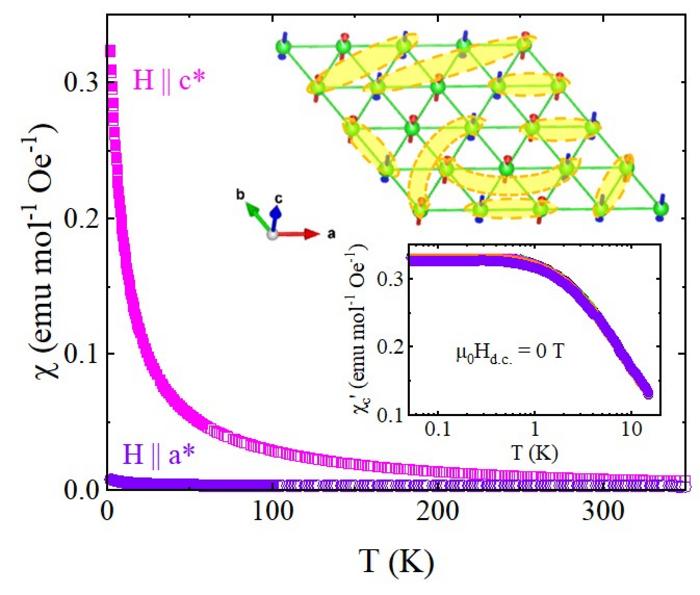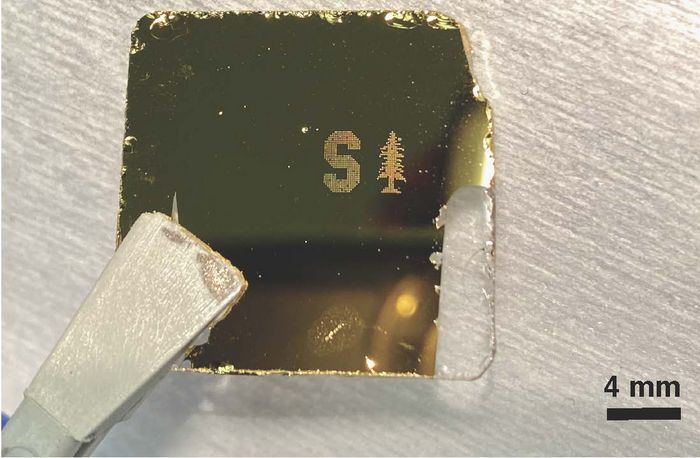A spin liquid is a special state of matter that arises in certain magnetic materials at very low temperatures. Despite its name, it doesn’t have anything to do with liquids in the everyday sense. Normally, in a magnet, these electron spins like to line up in a particular order. But in a spin liquid, due to the strangeness of quantum mechanics, the spins get frustrated and refuse to settle into a regular pattern, even at very cold temperatures. The absence of classical order parameters makes it arduous to identify using a single technique. The availability of large single crystals enables detailed studies such as magnetic anisotropy and magnetic excitations probed by inelastic neutron scattering.

Credit: Dr. Hanjie Guo from Songshan Lake Materials Laboratory
A spin liquid is a special state of matter that arises in certain magnetic materials at very low temperatures. Despite its name, it doesn’t have anything to do with liquids in the everyday sense. Normally, in a magnet, these electron spins like to line up in a particular order. But in a spin liquid, due to the strangeness of quantum mechanics, the spins get frustrated and refuse to settle into a regular pattern, even at very cold temperatures. The absence of classical order parameters makes it arduous to identify using a single technique. The availability of large single crystals enables detailed studies such as magnetic anisotropy and magnetic excitations probed by inelastic neutron scattering.
Recently, a study published in Materials Futures reported the successful synthesis of centimetre-sized single crystals of PrMgAl11O19, a new spin liquid candidate based on the triangular lattice.
In this paper, the authors used the high-pressure optical floating zone technique to produce a high-quality PrMgAl11O19 single crystal, which is isostructural to its sister compound PrZnAl11O19 that has been suggested as a Dirac spin liquid candidate. The synthesis of a single crystal enables a detailed structure characterization using single-crystal X-ray diffraction measurements. A careful refinement reveals a presence of approximately 7% disorder at the Pr3+ site. This is important information since for similar compounds such as YbMgGaO4, the site disorder between Mg and Ga drives the system into a spin glass state. However, magnetic and thermodynamic measurements on PrMgAl11O19 indicate the absence of long-range magnetic order and spin freezing down to as low as 50 mK, albeit with a large spin-spin interaction, ~ -8 K[EC1] . The magnetization, crystal electric field (CEF), and electron spin resonance (ESR) measurements further indicate an Ising anisotropy with the moments pointing out of the triangular plane. While the Heisenberg model on the triangular lattice usually leads to a magnetically ordered state, the Ising model can result in a macroscopically degenerate spin liquid state. This has been proposed for TmMgGaO4 and NdTa7O19 for instance. However, the former shows a partial order state below 0.7 K, and a lack of large single crystal for the latter hinders further studies. Thus, the availability of large single crystals for PrMgAl11O19 provides a promising opportunity to investigate the triangular Ising model in depth
The Future: In recent years, it has been realized that disorder may lead to exotic phases such as spin-liquid-like random-singlet states. Understanding the role of disorder is as challenging as producing ideal crystals. In this study, disorder occurs within the triangular magnetic sublattice, unlike YbMgGaO4 where disorder is at the nonmagnetic site. Substituting Pr with another rare earth element may result in different degrees of disorder at the magnetic site. This offers a controllable way to manipulate disorder. Substituting rare-earth ions will also alter the local spin character, providing another tuning parameter for magnetism. With large single crystals and numerous chemical substitutions available, this research avenue is promising for discovering materials with diverse properties like superconductivity, emergent quantum phenomena, and exotic spin textures.
The research has been recently published in the online edition of Materials Futures, a prominent international journal in the field of interdisciplinary materials science research.
Reference:
Cao Y, Bu H, Fu Z, et al. Synthesis, disorder and Ising anisotropy in a new spin liquid candidate PrMgAl11O19[J]. Materials Futures, 2024.
Journal
Materials Futures
DOI
10.1088/2752-5724/ad4a93
Method of Research
Experimental study
Subject of Research
Not applicable
Article Title
Synthesis, disorder and Ising anisotropy in a new spin liquid candidate PrMgAl11O19
Article Publication Date
13-May-2024





